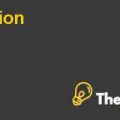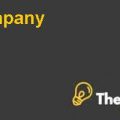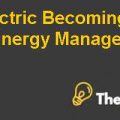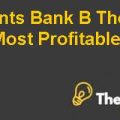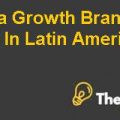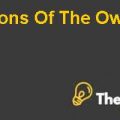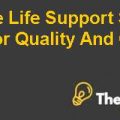Answer # 1:
In modern corporate finance, dividend policy is one of the most crucial topics for the decision-making as capital structure. Dividend policy outlines as to what amount of the profit earned should be paid to the shareholders and what level of earnings to be retained and reinvested in the firm to future growth perspective. There are a variety of views such as what factors should be taken into account while making the decision.
In theoretical terms, it is said that the dividend policy is irrelevant to the shareholders and they are not concerned about the amount of dividend being paid how ever,such a theory implies certain assumptions. These assumptions include that there is no tax benefit or disadvantage related to dividend, no bankruptcy cost, no transaction cost are attached at the time of converting incremental price of share into cash.High divid end paying firms can issue new shares at no cost to finance new positive NPV projects, high dividend payouts do not affect the company’s operating cash flows and finally, the shares of the firm are priced fairly.
All the above mentioned assumptions do not apply in the real world, as the corporations as well as individuals have to pay taxes and the choice of dividend or retention of earnings to increase the share price both result in different tax implications. The company cannot save issuance cost of new equity merely by paying high dividends as the issuance of new shares result in dilution of shareholdings, which will affect the current shareholders and also the operating cash flows of the company. The shares of a company are not always fairly price in the real world(Damodaran, 2010).
The preference of shareholders for high dividends can be due to a number of factors, which might vary in each situation. The segregation of ownership and management in case of a company might be one of the prime factors that shareholders demand for dividends. They prefer current dividends over future growth in the share price due to retained earnings because of the uncertainties in the future. This also depicts low confidence in management’s decision making to invest the earnings in positive NPV projects appropriately, which will ensure an increase in the wealth of the shareholders.
Another reason for high dividend preference is the dependency on it as a current income by the shareholders such as retired people, widows, orphans, pension-funds etc. These types of shareholders are ready to buy shares at a premium just to receive higher level of dividends. The shareholders of a company, individuals as well as corporate clients, often fall into the category of different tax groups that might be lower than others or may even be tax exempt would definitely prefer high dividend yield due to the tax saving effects. The high dividend payout will increase the trust of the equity holders, on the management, by reducing the level of uncertainties in their minds regarding the company’s performance and giving an overall positive image of the company in the stock market resulting in better share prices(McGraw−Hill, 2007).Dividend Payout Decision Case Solution
Answer # 2:
There are a number of factors, which the firm should take into account while deciding the amount to be distributed in the form of dividend. Practically, dividend should be the amount remaining after reinvesting the earning in the entire possible project that results in adding value to the wealth of shareholders. If the company does not follow this principle, then it will have to issue new shares bearing issue costs and dilution of shareholdings to finance high dividend payout. The reduced amount of retained earnings will result in the firm needing to upraise more finance externally to fund its upcoming investments for future growth. High payout ratio of dividend might also suggest that the company fails to identify new positive investment opportunities to sustain the future growth prospects of the company.
This scenario relates to the theory of ‘Bird In Hand’, which states that the shareholders prefer high dividend yields and doing so is the only way for the company to maximize its’ share value. In such a case, high dividend payout signals a less risky company than one with low payout ratio. The cost of equity is inversely proportional to the payout ratio according to this theory.
In reality, the company can increase the share price by satisfying this demand only in the short-term as this would affect the internal sources available for financing in the future. By rein vesting the earnings in new projects will ultimately cause an increase in the shareholders’ wealth. Shareholders with such a preference can be persuaded to agree to reinvest the returns on such projects as it would increase the future ability of the company to pay high dividend yields and maintain it as well(Sharan, 2009)....................
This is just a sample partial case solution. Please place the order on the website to order your own originally done case solution.

